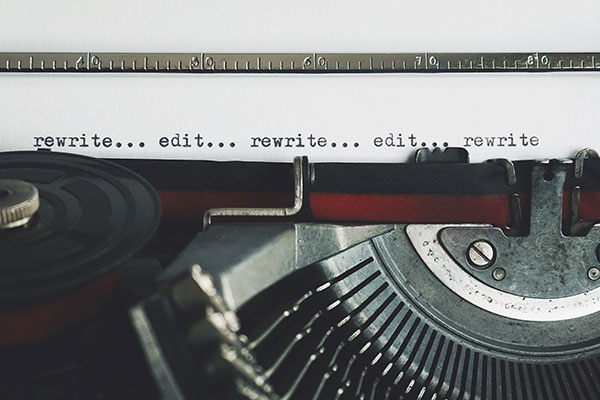From the Reading Chair
Rewriting and Editing
Openings are crucial. If the opening pages of a story are weak chances are no one will ever get to the middle, let alone the end.
The very best opening sentences draw us in because they are like portals to a whole universe. They give promise of what is to come.
Plot is shaped as much by the emotional journey of the central character as it is by the events of the story. The two are interlinked.
It works best when we get to know characters gradually, piecing together defining details about them over the course of the story.
You need to know more about your characters than your reader is ever going to know.
Doing a chapter outline after a completed draft maximises the leap forward in the next draft.
Scene outlines are a key strategy in developing work for publication.
Getting from writer's draft to reader's draft is a process. Which development phase are you in?
'It was EXTREMELY difficult for me to take in the suggested cuts and edits. At times I wasn't sure I could sustain the mental or physical energy needed to see it through...
What are the different types of editing, and when do you need them?
A writing mentor can help you understand your work and your practice in new ways, and help you navigate the often tricky emotional terrain of writing a book.
One of the keys to success for a writer is an ability to pay attention to the macro as well as the micro, to the mundane as well as the sublime.
Theme. Plotlines. Characters. Backstory. Point of view. The artistry in developing work for publication lies in understanding how these elements work together to create your story design.
The central event is the one event the book cannot do without; it is central to and creates the story. Without it, the book collapses like a house of cards.
To develop your work and create a strong story structure, it is crucial to understand the major dramatic question that lies at the heart of your story.
Where does the real story lie? What is the essence of your tale? What are you really trying to say? What is it about?
When you are crafting your ending, think about whether you have said what you wanted to say. Are there any loose ends? Are there story questions posed that aren’t answered?
Listening to the written word helps us understand the effects we create through word choices. Read your own work aloud. Edit with your ears. You'll ‘hear’ things that you may not ‘see’ on the page.
The function and roles of subplots are important principles to understand, but there is no golden rule. That’s what makes the creative endeavour of writing fiction so alluring and at the same time so terrifying.
It may be shambolic, confused, all over the place. It may be a train wreck. That's okay. It’s just the first draft. And first drafts are messy.
Writers often moan and groan about writing a synopsis. But there's no escape; you're going to have to do it.
Recently I’ve been prompted to consider why a fat, pink heart may say more to us than the word ‘love’ or ‘xx’, and what this tells us about writing good dialogue.
The 'overnight' success of debut books is usually built on a development process spanning many, many years.
Structural issues are common in both fiction and narrative non-fiction book-length works. Understanding story structure is key.
Critical reading is an important skill for writers to develop. Don't underestimate the value of reading the works of others.
‘Editing is part of the creative process; don’t see it as separate from the writing process – you owe it to your work to deepen it.’
Successful writers understand that writing is mostly about rewriting. You can't avoid revising your manuscript.
How does an editor help a writer with their manuscript? What do they do?
Trimming and tightening text is a little like pruning in the garden to increase the quality of flowering and fruiting, to remove deadwood, and to improve the overall structure and shape.




























